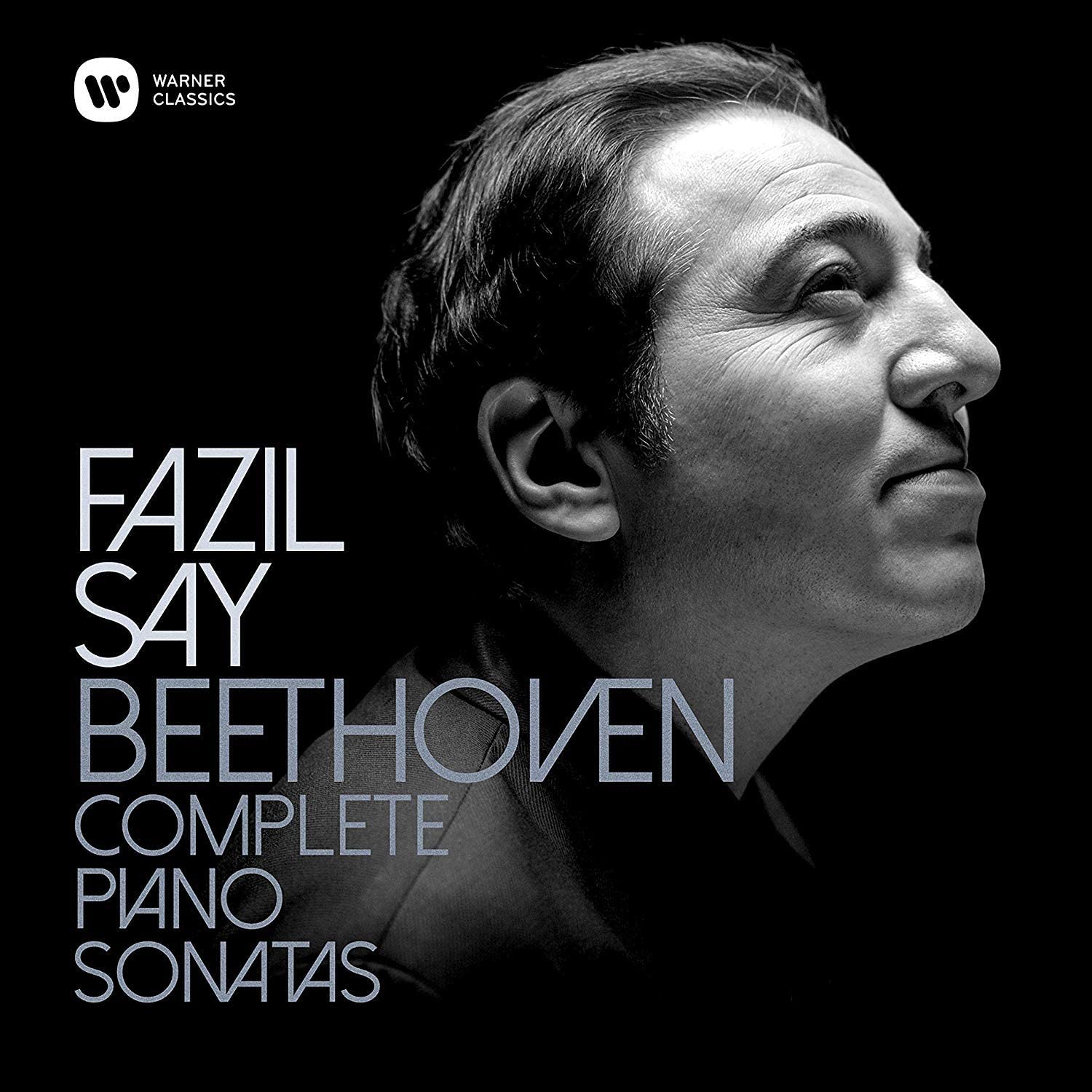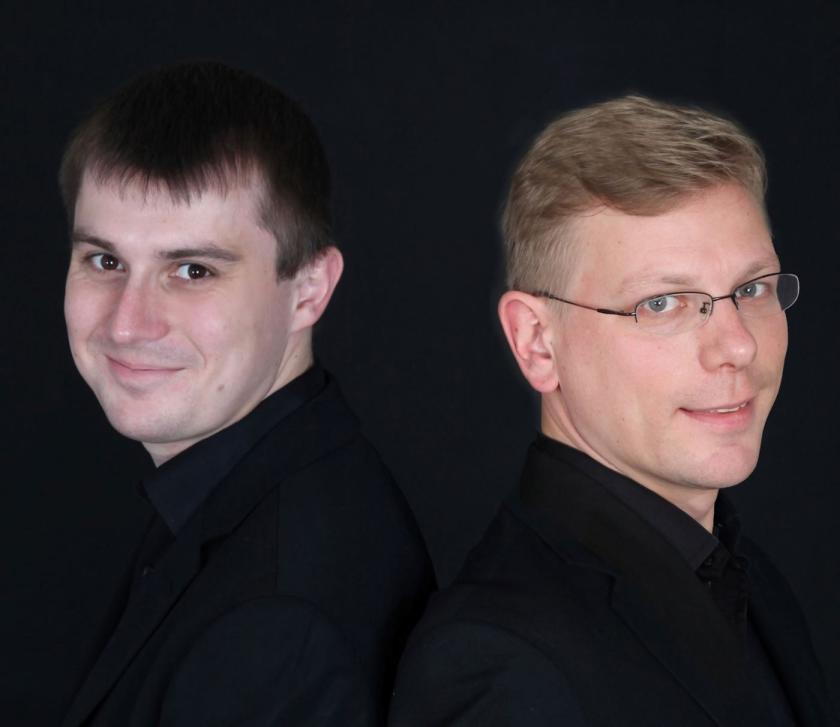 Beethoven: Complete Piano Sonatas Fazil Say (Warner Classics)
Beethoven: Complete Piano Sonatas Fazil Say (Warner Classics)
“This is a 605 minute piece containing 32 sonatas.” There's some bewildering verbiage from pianist Fazil Say near the back of Warners’ booklet, Say describing the creation of his ‘Fazil Say Beethoven Orchestra“, and practicing the piano sonatas in front of an ‘imaginary Beethoven’, “brimming with boundless energy and musical spirit.” It's easier to understand the relief felt by Say when 11 months of recording sessions came to an end in May 2019: “…a strange weight lifted from me. I felt like I was in a huge void.” Predictably, Say is much more wilful and capricious than Igor Levit in his recent Sony box set, but there's so much to enjoy here. Despite the endless hours of preparation, Say’s playing is spontaneous and zesty. These often feel like live performances, taped on the hoof. There's the odd misfire, but the positives far outweigh the gripes. Take No. 14, the over-familiar opening beautifully cool, before the third movement erupts. It's brilliantly exciting, a feast of punchy accents and stark dynamic contrasts. Some might be distracted by Say's Gouldian vocalising, though it never bothered me. There's a similar exuberance at play in No. 15’s first movement, Say’s vision more urban than pastoral. And then he'll throw in something unexpectedly beguiling, like No. 18’s little minuet, played here with such sincerity and affection.
Say's penchant for extremes pays off in several of the early sonatas; Nos. 6 and 7 really sparkle. Still, any pianist will be judged by how they tackle the mature sonatas. I enjoyed a forthright, crisp version of No. 21, its first movement grinning in Say's fingers. No. 31’s fugal finale unwinds with clarity, and No. 32 is as enigmatic as it’s thrilling. In short, Say is well worth hearing; he's blessed with rich recorded sound and his idiosyncratic, characterful performances should invoke more smiles than frowns.
 Prokofiev: Piano Sonatas 6, 7 and 8 Steven Osborne (piano) (Hyperion)
Prokofiev: Piano Sonatas 6, 7 and 8 Steven Osborne (piano) (Hyperion)
These three pieces are often referred to as Prokofiev's “War Sonatas”, though the composer never labelled them as such. Written between 1939 and 1944, we do know that Prokofiev worked on the sonatas simultaneously. They share a tough and uncompromising musical language, though the angst is offset by brilliant melodic writing; the Prokofiev of Romeo and Juliet and Cinderella is never far away. Crucially, they're taut and well-organised. Prokofiev's symphonies can feel episodic, whereas these sonatas are immaculately constructed and don’t contain a wasted note. This new disc is very special indeed. Steven Osborne's technical prowess is never an issue, the ferocity and muscular energy of the playing thrilling. Add to that an understanding of Prokofiev’s sharp wit, and an ability to make the tunes sing, and you've probably got the best modern accounts of the sonatas available. No. 6’s brusque opening comes like a slap in the face, and the carillon-like passage a few minutes in is overwhelming. But there's affection and charm in the inner movements, and an explosive finale. There's a memorable theme about 90 seconds in which sounds like an extract from a demonic silent film score, Osborne dispatching it with a wicked but irresistible glint in his eye. It's sensational. As is the shorter Sonata No. 7, the bittersweet warmth of Prokofiev’s slow movement foiled by a truly hair-raising 7/8 Precipitato.
No. 8 is more introspective, Osborne's opening restrained and poetic, the first movement’s clangorous middle section suitably rich. Of the three sonatas, this alone finishes in a mood of genuine affirmation, the last movement's second theme one of Prokofiev's catchiest. The final cadence is almost derailed in a manner which recalls the close of the Fifth Symphony. You'll need a quiet sit down after the last unison B flats have stopped ringing out. There we go: three of the last century's greatest piano works in a handy package, each one brilliantly performed. Hyperion's sleeve art is attractive, the booklet containing a thank you from Osborne to his hard-working physiotherapist, “for helping me get through this (and much else)”.
 A Tale of Two Violas Peter Mallinson and Matthias Wiesner (violas), with Evgenia Startseva (piano) (Meridian)
A Tale of Two Violas Peter Mallinson and Matthias Wiesner (violas), with Evgenia Startseva (piano) (Meridian)
We're still more used to hearing the viola as an ingredient rather than a taste in its own right; the instrument’s warm, smoky timbre adding a unique flavour when deployed effectively. Think of Brahms’s violinless Serenade No. 2, where the violas provide the uppermost string voice. There's a nice quote from a 1950s critic in this disc’s booklet, one Harris Goldsmith declaring that “a viola recital is far from a common occurrence, a recital of viola duets an absolute rarity.” Proving Goldsmith wrong are two members of the BBC Symphony Orchestra’s viola section, Peter Mallinson and Matthias Wiesner. The earliest work here is Ian Farrington’s ear-tickling transcription of Bach's Brandenburg Concerto No. 6, the lower string parts filled in discreetly by pianist Evgenia Startseva. Three of the pieces were arranged or written by the great Lionel Tertis, an internationally renowned viola virtuoso who commissioned scores of new works and even arranged Elgar’s Cello Concerto for himself to play. Tertis’s Variations on a Passacaglia of Handel is a find, especially entertaining when it starts to wander stylistically from its source material. Tertis’s arrangements of Schubert and Dowland are equally appealing.
The other 20th century violist celebrated is Vadim Borisovsky, a long standing member of Shostakovich's beloved Beethoven Quartet. Borisovsky’s likeable ten-movement Suite was based on music by the Italian baroque composer Giovanni Battista Vitali, harpist Anneke Hodnett adding appealing, if inauthentic, splashes of colour. And there's a jolly Sonata in D, freely arranged by Borisovsky from an original by Friedrich Wilhelm Heinrich Benda. And John Hawkins’ At Two, written for Mallinson and Wiesner in 2017 is a disconcerting diptych, the two violas’ warmth making Hawkins’ angular melodies sing. An intriguing, joyous collection, filling a niche few of us knew existed. The pair’s warm, affectionate playing is terrific throughout, exactly as you'd expect from two friends who've spent many long days together working as orchestral musicians. Meridian’s engineering is impressive. Though I'm less convinced by the sleeve art, Borisovsky’s and Tertis's scowling faces grafted onto a pair of opposing violas.















Add comment